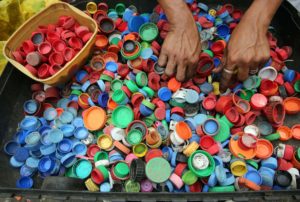Keeping You in the Picture: some ways of using pictures for language teaching.

Introduction
In my last blog post, I discussed some ways of using a text for language teaching. In this post, I would like to approach the topic of using pictures in class. Obviously, there are innumerable uses: from presenting vocabulary to initiating a discussion. Here, I would like to look at some ideas I have found useful for teaching and practicing grammar using pictures.
It is possible to use just one or two pictures like this to assess the grammar level of a new learner. This can be very useful in placing a new learner in the correct class.
Present Simple
 Looking at the picture ask simply ‘What is this?’ or ‘What is that?’ and try to elicit ‘This is a car’ or ‘That is a bridge’. You may need to hold the picture close or at arm’s length to enforce the difference. In an inlingua virtual classroom you could make the picture smaller to introduce ‘that’ to create an illusion of distance. If you choose a picture with an obvious perspective this may not be necessary. You could ask ‘What is there in the picture?’ or ‘How many people can you see in the picture?’ for lower intermediate learners or false beginners.
Looking at the picture ask simply ‘What is this?’ or ‘What is that?’ and try to elicit ‘This is a car’ or ‘That is a bridge’. You may need to hold the picture close or at arm’s length to enforce the difference. In an inlingua virtual classroom you could make the picture smaller to introduce ‘that’ to create an illusion of distance. If you choose a picture with an obvious perspective this may not be necessary. You could ask ‘What is there in the picture?’ or ‘How many people can you see in the picture?’ for lower intermediate learners or false beginners.
Another example would be using comparatives ‘Is this bigger than that?’ ‘Is the mirror cleaner than the windscreen?’ etc. You might ask which season of the year it is or how much the learner thinks something would cost.
If using a picture of a town, you may ask what you can do in the town or ask how often the woman goes to the shop or the man to the barber’s and so on.
Present Continuous
Using the same picture, you could go on to questions like ‘What is the woman doing now?’ ‘Is the woman waiting for a bus?’. You can also compare the present continuous with the present simple for habits or routines using ‘generally’ ‘normally’ to contrast with ‘today’ or ‘now’.
Past Simple
 You can encourage learners to use the past simple to tell you about the history of the people or things in the picture. ‘When do you think this building was built?’ ‘What did the woman do before she helped the customer?’
You can encourage learners to use the past simple to tell you about the history of the people or things in the picture. ‘When do you think this building was built?’ ‘What did the woman do before she helped the customer?’
Past continuous
Get the learner to describe the background of the picture as compared with the main subject: ‘The little girl was playing in the park when the bus stopped’ ‘It was raining when the dog came home’.
Will Future
You can ask the learners to tell you what will happen in the future when referring to the picture. ‘It will rain before the cricket match finishes’ ‘The man will trip over a bottle on the road’ ‘In the future people will live on Mars’.
Present Continuous for Future
 ‘Look in their suitcases. Are they travelling to a warm place or a cold place?’? ‘Is she flying to the coast or cruising down the river?’
‘Look in their suitcases. Are they travelling to a warm place or a cold place?’? ‘Is she flying to the coast or cruising down the river?’
Going to future
‘Is the dog going to jump the fence?’ ‘How are they going to get out of the park?’
Conclusion
As you can see, it is possible to use a fairly simple picture or a few pictures to elicit all the main grammar structures. Think about how you could elicit the Present Perfect or the conditionals with a picture. Obviously, some pictures offer a great deal of opportunities for eliciting grammar, some are maybe better suited to eliciting or feeding vocabulary.
inlingua books are filled with pictures that can be used in the lesson. They may be used to expand a lesson where time is available or to expand on the topics and structures of a particular lesson. Pictures are useful when language trainers are asked to fill in a lesson at short notice or review the topic of a previous lesson. Pictures complement the inlingua principle of learning though speaking because they are not showing the written text.
Some other ideas for teaching grammar with pictures, here.
There are some more ideas about using pictures in class: here and here.
Research on using pictures for teaching vocabulary, here.
Next blog
The inlingua Academy: inlingua’s innovative online teacher-training program.